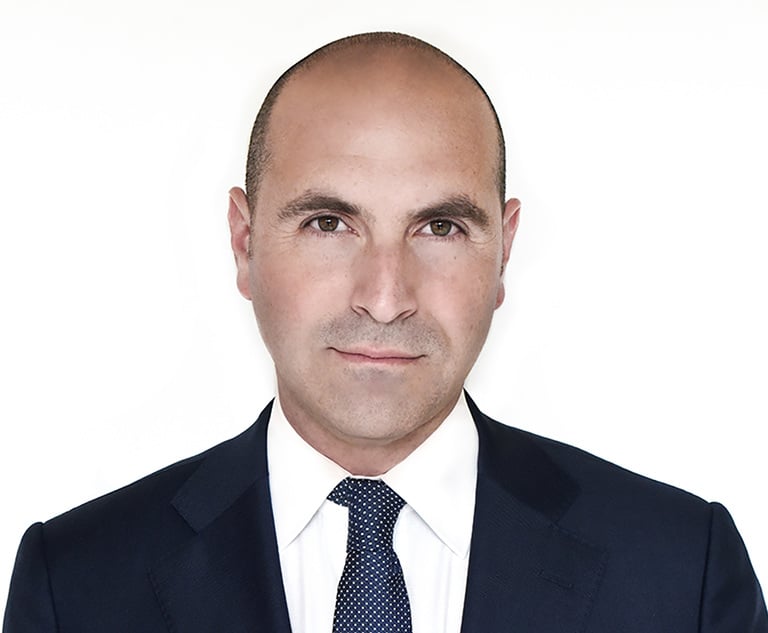Toys 'R' Us—Not the Last LBO Shoe to Drop
Apparently, Toys "R" Us has been suffering from many of the maladies that affect traditional retailers today, and that environment has contributed to the many insurmountable obstacles facing the toy and children's retailer, writes Charles M. Tatelbaum.
September 28, 2017 at 10:11 AM
5 minute read
With the somewhat surprising recent Chapter 11 filing for Toys “R” Us, renewed skepticism concerning the fate of brick and mortar retailers emerges. However, a closer examination of the causes for the Toys “R” Us reorganization attempt points a finger not solely at the retail environment, but, more importantly, at the underlying and inherent anatomy of a leveraged buyout (LBO). Apparently, Toys “R” Us has been suffering from many of the maladies that affect traditional retailers today, and that environment has contributed to the many insurmountable obstacles facing the toy and children's retailer. Moreover, an analysis of the structure and foundation of an LBO points to a prescription for a potential financial disaster when monstrous LBO debt burdens a brick and mortar retailer.
An LBO occurs when a profitable publicly held company receives a tender offer from an acquirer (usually a hedge fund or some other investment vehicle). Shareholders of the target company are offered a multiple of net worth of the company as an inducement to sell their shares and relinquish their ownership interests in the profitable entity. In order to finance the purchase of the shares of stock, the acquirer has the target company borrow the funds necessary to purchase the stock from the public shareholders and uses the assets of the company as collateral for the loan.
An example will demonstrate why most LBOs (especially those that have a retail component) are destined to fail. Suppose that the target company has a net worth of $1 billion. That means that its assets are $1 billion greater than its liabilities, and in a perfect world, if the company were to be liquidated, the shareholders would divide the $1 billion. In an LBO scenario, shareholders demand a premium in order to sell their shares. For this example, we will use a premium which is three times a multiple of the net worth. Thus, for the calculations, the acquiring entity will need to pay $3 billion in order to acquire the shares of stock in order to affect the leveraged buyout and take the company private. In order to do so, the acquiring entity will cause the company to borrow the $3 billion to purchase the shares, with the company's assets serving as collateral for the loan. Since loans of this nature are traditionally high risk, the interest charged on the loan will be substantially above market. Thus, the company will now be required to pay interest and reduce the principal of the debt where the company received no benefit from the massive loan.
This content has been archived. It is available through our partners, LexisNexis® and Bloomberg Law.
To view this content, please continue to their sites.
Not a Lexis Subscriber?
Subscribe Now
Not a Bloomberg Law Subscriber?
Subscribe Now
NOT FOR REPRINT
© 2025 ALM Global, LLC, All Rights Reserved. Request academic re-use from www.copyright.com. All other uses, submit a request to [email protected]. For more information visit Asset & Logo Licensing.
You Might Like
View All
Financially Grounded: South Florida-Based Silver Airways Files for Bankruptcy


US Judge Throws Out Sale of Infowars to The Onion. But That's Not the End of the Road for Sandy Hook Families
4 minute read
Growing Referral Network, Alternative Fees Have This Ex-Big Law’s Atty’s Bankruptcy Practice Soaring
5 minute readTrending Stories
- 1Law Firms Report Wide Growth, Successful Billing Rate Increases and Less Merger Interest
- 2CLOs Face Mounting Pressure as Risks Mushroom and Job Duties Expand
- 3X Faces Intense Scrutiny as EU Investigation Races to Conclusion & Looming Court Battle
- 4'Nation Is in Trouble': NY Lawmakers Advance Bill to Set Parameters for Shielding Juror IDs in Criminal Matters
- 5Margolis Edelstein Broadens Leadership With New Co-Managing Partner
Who Got The Work
J. Brugh Lower of Gibbons has entered an appearance for industrial equipment supplier Devco Corporation in a pending trademark infringement lawsuit. The suit, accusing the defendant of selling knock-off Graco products, was filed Dec. 18 in New Jersey District Court by Rivkin Radler on behalf of Graco Inc. and Graco Minnesota. The case, assigned to U.S. District Judge Zahid N. Quraishi, is 3:24-cv-11294, Graco Inc. et al v. Devco Corporation.
Who Got The Work
Rebecca Maller-Stein and Kent A. Yalowitz of Arnold & Porter Kaye Scholer have entered their appearances for Hanaco Venture Capital and its executives, Lior Prosor and David Frankel, in a pending securities lawsuit. The action, filed on Dec. 24 in New York Southern District Court by Zell, Aron & Co. on behalf of Goldeneye Advisors, accuses the defendants of negligently and fraudulently managing the plaintiff's $1 million investment. The case, assigned to U.S. District Judge Vernon S. Broderick, is 1:24-cv-09918, Goldeneye Advisors, LLC v. Hanaco Venture Capital, Ltd. et al.
Who Got The Work
Attorneys from A&O Shearman has stepped in as defense counsel for Toronto-Dominion Bank and other defendants in a pending securities class action. The suit, filed Dec. 11 in New York Southern District Court by Bleichmar Fonti & Auld, accuses the defendants of concealing the bank's 'pervasive' deficiencies in regards to its compliance with the Bank Secrecy Act and the quality of its anti-money laundering controls. The case, assigned to U.S. District Judge Arun Subramanian, is 1:24-cv-09445, Gonzalez v. The Toronto-Dominion Bank et al.
Who Got The Work
Crown Castle International, a Pennsylvania company providing shared communications infrastructure, has turned to Luke D. Wolf of Gordon Rees Scully Mansukhani to fend off a pending breach-of-contract lawsuit. The court action, filed Nov. 25 in Michigan Eastern District Court by Hooper Hathaway PC on behalf of The Town Residences LLC, accuses Crown Castle of failing to transfer approximately $30,000 in utility payments from T-Mobile in breach of a roof-top lease and assignment agreement. The case, assigned to U.S. District Judge Susan K. Declercq, is 2:24-cv-13131, The Town Residences LLC v. T-Mobile US, Inc. et al.
Who Got The Work
Wilfred P. Coronato and Daniel M. Schwartz of McCarter & English have stepped in as defense counsel to Electrolux Home Products Inc. in a pending product liability lawsuit. The court action, filed Nov. 26 in New York Eastern District Court by Poulos Lopiccolo PC and Nagel Rice LLP on behalf of David Stern, alleges that the defendant's refrigerators’ drawers and shelving repeatedly break and fall apart within months after purchase. The case, assigned to U.S. District Judge Joan M. Azrack, is 2:24-cv-08204, Stern v. Electrolux Home Products, Inc.
Featured Firms
Law Offices of Gary Martin Hays & Associates, P.C.
(470) 294-1674
Law Offices of Mark E. Salomone
(857) 444-6468
Smith & Hassler
(713) 739-1250






